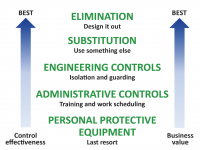Lightbulbs: Facts Versus Fiction
Lightbulbs: Facts Versus Fiction The phase out of incandescent bulbs set in motion by the Energy Independence and Security Act (EISA) of 2007 was intended, in part, to eventually eliminate inefficient incandescent lightbulbs, known as “general service lamps,” and increase use of more efficient lighting technologies. Along the way, however, confusion has grown about new […]










